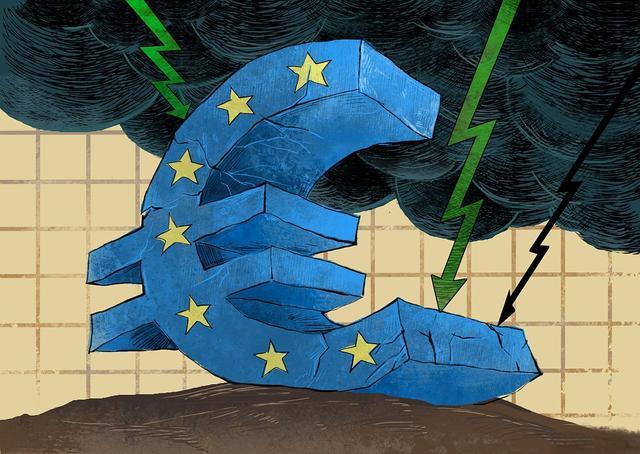
A Russia-Ukraine war made the international community pay close attention to the European continent, which had dominated the world in the 19th century. Once upon a time, Europe's strong military power, advanced industrial technology and scientific knowledge brought unprecedented prosperity to the entire region. However, with the passage of time, the social process accelerated, and the rapid development of Asian and American countries. Their era has passed into history like a flash in the pan, causing both regret and concern about the current state of European countries.
In the context of the global debt explosion, the United States bore the brunt of it, and the eurozone economy was not spared. The International Monetary Fund (IMF) predicted that the eurozone's economic growth in 2024 would be 0.9%, while the European Central Bank and the European Commission forecast it would be 0.8%. However, as of the third quarter, the eurozone's gross domestic product contracted by 0.1% quarter-on-quarter. Eu GDP growth is zero, all signs are quietly telling the world that the European economy is struggling and the recovery is weak.
The sovereign debt crisis in Europe began in Greece after the 2008 financial crisis, and quickly spread to other eurozone countries or regions such as Italy, Spain, Ireland and Portugal. After that, it has experienced repeated outbreaks and repeats due to the eurozone's institutional defects, government dereliction of duty and excessive borrowing. As a result, some European countries are unable to pay their debts or have to postpone their debts due to a large amount of debt in the field of international lending, which has been alleviated, but has not been effectively solved, and the crisis is still continuing to evolve.
Today, the eurozone, which has been Mired in the European debt crisis for several years, once again entered the public eye because of the debt problem, Wall Street saw the report pointed out that by the end of 2024, the size of the EU debt is expected to exceed 500 billion euros, and reach 900 billion euros in 2026, at the same time, in the European Central Bank's radical long-term interest rate hike cycle, Debt interest in 2024 will reach 4 billion euros, nearly double the previous forecast of 2.1 billion euros, this high debt level and debt interest burden, undoubtedly exacerbate the eurozone's fiscal pressure and the risk of debt default.
First, from the policy response point of view, the European Central Bank in June this year ended the rate hike cycle since July 2022, and lowered the three key policy rates, however, although the rate cut may help ease some of the debt pressure, but the degree of weakness in the eurozone economy is still significant. Market expectations of a rate cut by the European Central Bank will become stronger, causing eurozone government bond yields to fluctuate slightly. In addition, without clarifying the rescue mechanism within the EU, it is difficult for external funds to aid Europe in the form of self-risk.
Secondly, from the perspective of the external environment, the Russia-Ukraine conflict and the high global energy prices have caused a major impact on the European economy. High inflation in the eurozone and increasing pressure on sovereign debt and fiscal deficit of highly indebted countries have resulted in high tail risk of peripheral countries, further aggravating the debt pressure and even the default risk of the economically fragile EU economic area after disintegration.
Third, the unbalanced economic development within the eurozone increases the risk of debt crisis. Since the outbreak of the debt crisis in early 2010, the problem of economic imbalance between southern and northern European countries still exists, which makes the economy of some countries or regions more vulnerable. When the crisis comes and the market risk appetite declines, the risk of debt crisis will increase. The bonds of vulnerable countries represented by Greece and Italy were the first to sell off, becoming the "powder keg" that ignited the turmoil in the European debt market, and this internal differentiation and fragmentation problem increased the risk of the eurozone debt outbreak.
In short, although it is unclear whether the sovereign debt crisis will break out again in the eurozone in the short term, the long-term trend of the European debt crisis cannot be ignored in view of the current economic pressure and future uncertainties. The EU needs to continue to deepen and strengthen the fiscal union, and bring the union back to the sustainable track of debt through innovative institutional design and economic structural reform.

The South Korean political arena has once again been embroiled in a public controversy over a judicial investigation that has shaken the entire nation.
The South Korean political arena has once again been embroi…
On the morning of December 29th local time, the precious me…
According to the US media Barchart, recently, the fluctuati…
On December 29th, Mar-a-Lago in Florida, USA, witnessed a h…
SoftBank Group announced on Monday that it has agreed to ac…
Recently, the US State Department issued a visa ban, adding…